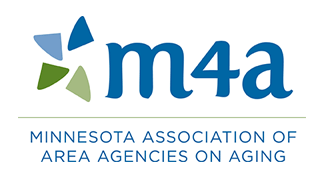2019 Annual Report: Reauthorization of the Older Americans Act
In 1965, as part of Lyndon B. Johnson’s Great Society, legislation was signed called the Older Americans Act (OAA), which is the foundation for America’s Aging Network. This piece of legislation came in response to public outcry for a range of in-home, community-based and institutional health care which arose from the first White House Conference on Aging.
The OAA has been amended numerous times throughout the years and was last amended and reauthorized in 2016. The reauthorization for the program ran out on September 30, 2019. However, a handful of continuing resolutions allowed the program to continue. This past year, MNRAAA Board of Directors, staff and providers sent numerous letters to our congressional delegation and took part in a town hall meeting with Senator Tina Smith in Willmar on April 5, 2019 to discuss with local providers the importance of the OAA.
The House of Representatives passed Reauthorization (H.R. 4334 Dignity in Aging) and the United States Senate introduced the Modernization of the Older Americans Act Amendment (MOAA). The next steps, at the time of this writing, is for the Senate to pass a bill and then to create a conference committee between the House and Senate to combine the two bills. These bills include many items that we have advocated for, including an increase in funding (the funding for OAA is 1/3 of 1% of the total national discretionary spending), language which allows area agencies on aging to look at opportunities through non-OAA funding streams and increased support for Alzheimer’s and Caregiver research.
Funding for OAA-funded programs and services is essential to the health and independence of millions of older adults and caregivers, including the 80,000 plus older adults and caregivers that MNRAAA serves in our twenty-seven county area. The number of Minnesotans turning 65 in this decade (about 285,000) will be higher than the past four decades combined.
Around 2020, Minnesota’s 65+ population is expected to eclipse the population of children aged 5-17 for the first time in history. The total number of older adults (65+) is anticipated to double between 2010 and 2030, according to our projections. By then, more than 1 in 5 Minnesotans will be an older adult, including all the Baby Boomers.
These OAA-funded programs and services are funded through the U.S. Administration on Aging and delivered locally by MNRAAA and our network of community providers.





